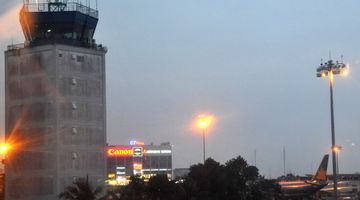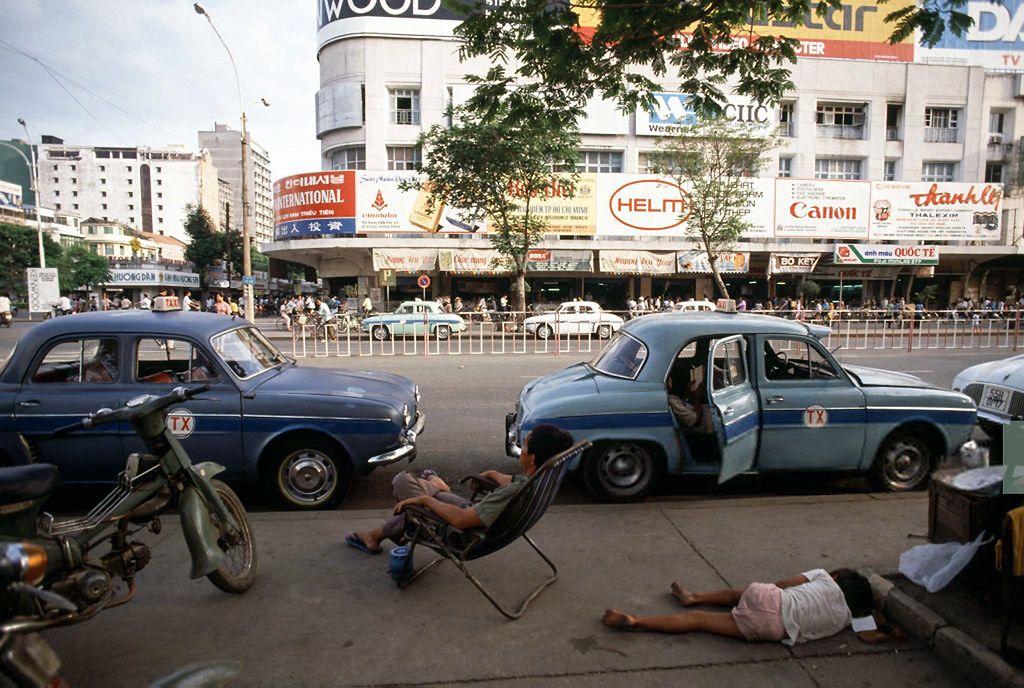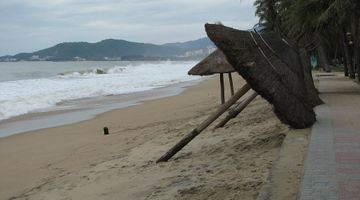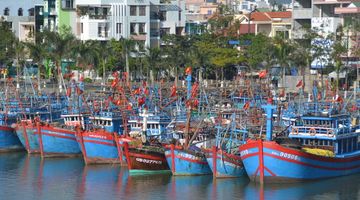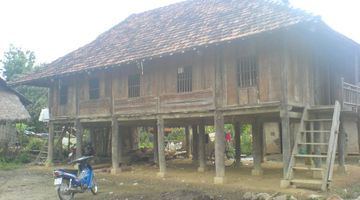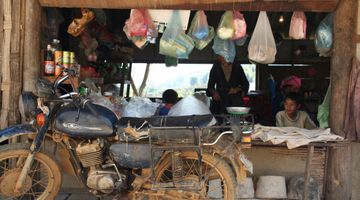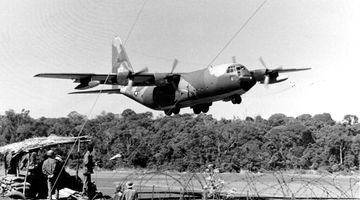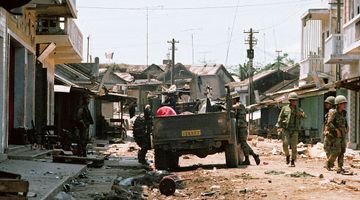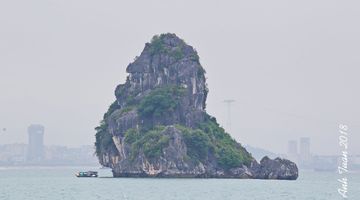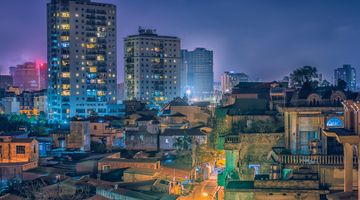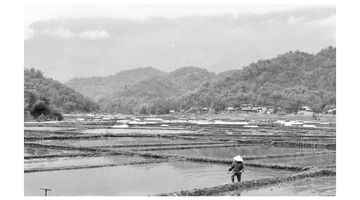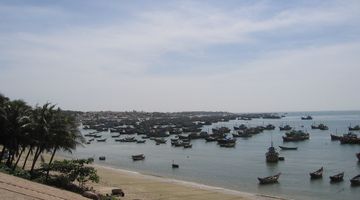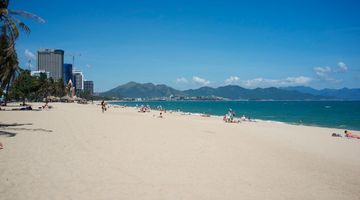Ho Chi Minh City (HCMC)
In a nutshell
Ho Chi Minh City, formerly known as Saigon, is Vietnam’s most bustling cultural centre.
Why go to Ho Chi Minh
Step into the streets, and watch as thousands of motorbikes zip up and down the lanes, often hopping onto the sidewalks when impatience arises. Narrow, winding alleyways buzz with activity all throughout the morning and day, with food carts making rotations, families and locals going about their routines, and homes opening up their doors for dinner in the evenings.
For travellers who want a mix of everything – culture, cuisine, activity, and history – HCMC is the hub of it all. A broad spectrum of new and old exists here, with sights and tours that will take you back in time, to skyscraping buildings that look modern enough to resemble just another of the world’s sprawling, developed cities.
Our favourite aspect of HCMC is that contrast between new and old; take a walk down most streets and admire ancient architecture and pagodas, but cross over to the next block and gaze up in awe at the city’s impressive skyline. Stop to get your haircut at an outdoor barber shop with a small cart as the storefront, and then take a peek inside a high end, ultra modern restaurant run by Michelin inspired chefs.
When to go to Ho Chi Minh
Like most Southeast Asian cities, there’s much to gain by visiting HCMC in the dry season. From December to April, rainfall is sparse enough to allow full enjoyment of your days spent outdoors, touring the area. The temperature is hot during this time, with an average of 28 degrees Celsius, but the trade off is not having to worry about being stuck indoors all day.
To make the best of the heat, do as the locals do and carry an umbrella to block the harsh sun. Also plan to dress accordingly, with moisture wicking clothes for the humidity. Sunblock is a great idea if you’re planning to tour on foot, and a full water bottle is essential.
Where to stay in Ho Chi Minh
Like the rest of the city, the variation in accommodation options is vast. For backpackers with tight budgets, check out Pham Ngu Lau. Here, you’ll find hostels and low priced guesthouses along with bars, street food, and restaurants. This is a great place to come for some expat camaraderie, but if you’re looking to escape the backpacker scene, opt for another location.
The area around Ben Thanh Market is a great alternative for mid-range rooms outside of the late-night party area. We suggest making roots here if you’re looking to make use of public transportation, as it’s right next to the largest metro station in the city.
Where to eat in Ho Chi Minh
While it’s easy to find fine dining experiences in HCMC, like the rest of the country, street food is as much a part of life as anything else. You’ll find food carts pretty much everywhere you go, along with cheap restaurants, sprawling markets, and home-style meals.
Pham Ngu Lau is chock full of cheap eats if you’re looking to spend less than USD1 on a full meal. Alternatively, try out Ben Thanh Street Food Market for some of the cheapest and most delicious food you’ll ever eat. We suggest trying out a plate of fresh spring rolls for a refreshing snack in the heat.
Getting around in Ho Chi Minh
It’s not difficult to guess the common mode of transportation here, as you’ll likely be swept up in a sea of motorbikes everywhere you go. While we don’t recommend renting one yourself, you should hop on the back of one for a quick taxi ride to your next destination.
Motorbike taxis are both cheap and efficient, but do wear a helmet, as traffic can get a little wild.
You can also opt for a regular taxi for a slightly higher price, but insist on using the meter, as it’s easy to get scammed if you don’t.
Lastly, buses are available, but unless you’re staying outside of the city, motor taxis are cheap, and many areas are walkable, so you likely won’t need to rely on the bus service.
Getting in and out
HCMC is one of the best connected locations in the country, so regardless of whether you’re traveling inside or out of Vietnam, you won’t have trouble getting here.
The Tan Son Nhat International Airport is the best arrival point if flying into Vietnam, as it’s the largest hub in the whole country. You’ll be able to find direct flights to a long list of international countries here, along with cheap domestic flights, too.
VietJet is one of the country’s budget airlines that will take you cheaply within Vietnam and around other parts of Southeast Asia.
For example, from HCMC to Hanoi, flights can be purchased for as little as USD100, with dozens of flights leaving daily, taking just over two hours. Additionally, to Danang, airfare can be had for a budget price of USD70 and up.
Vietnam is also well connected by bus, both in and out of the country. Travellers coming from Cambodia can travel from Phnom Penh for about USD12, with the trip lasting about 12 hours. We recommend the overnight bus with sleeper seats to leave optimal time for touring HCMC upon arrival.
Within the country, Sinh Cafe and Hanh Cafe both sell extremely affordable open bus tickets. If you’re planning to travel throughout Vietnam, they are both a good option, as you’ll be able to leave your itinerary flexible while still making as many stops as you want. This mode of travel can often be slow going, but the views across country are fantastic, and buses are typically high quality with spacious seats and bathrooms onboard.
Train travel is also available via the North-South Express trains. Daily journeys to cities like Hanoi or Nha Trang are frequent and comfortable, but make sure to choose the seat class wisely, especially on long trips.
Even slower than buses, albeit very comfortable if opting for a private cabin, a trip from HCMC all the way to Hanoi in the north, for example, will take nearly two days at a cost of around VND600,000 all the way up to VND2,000,000, depending on the ticket class.
Safety in HCMC
While HCMC is typically a safe place, it’s wise to treat it like any other big city in the world. Be careful not to explore any parks after dark, as problems with tourists have been known to occur. Also avoid renting your own motorbike. The traffic and lack of rules make this extremely dangerous, and a proper license is needed, so tread with caution.
